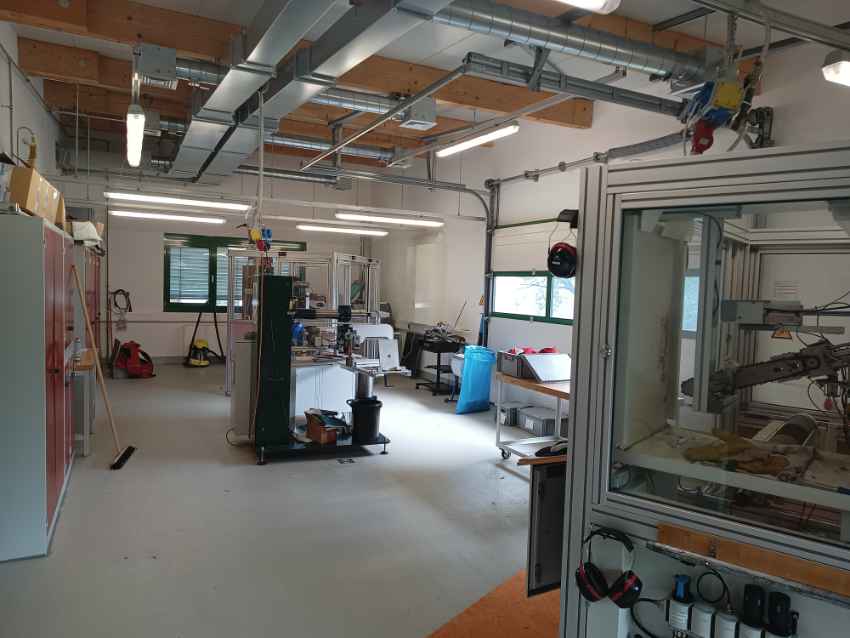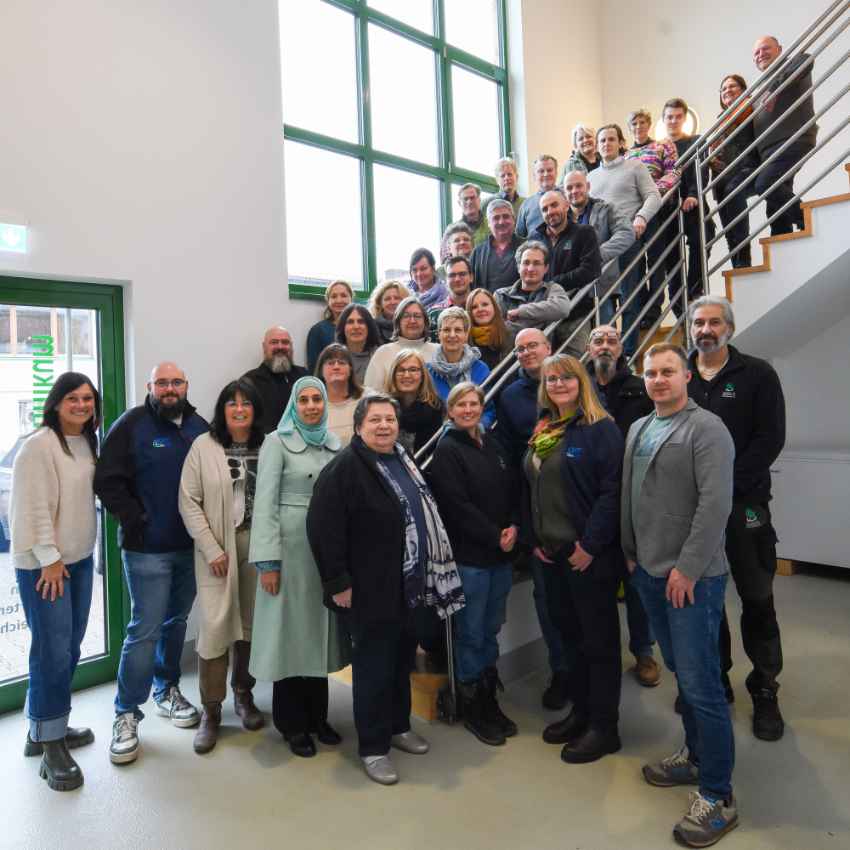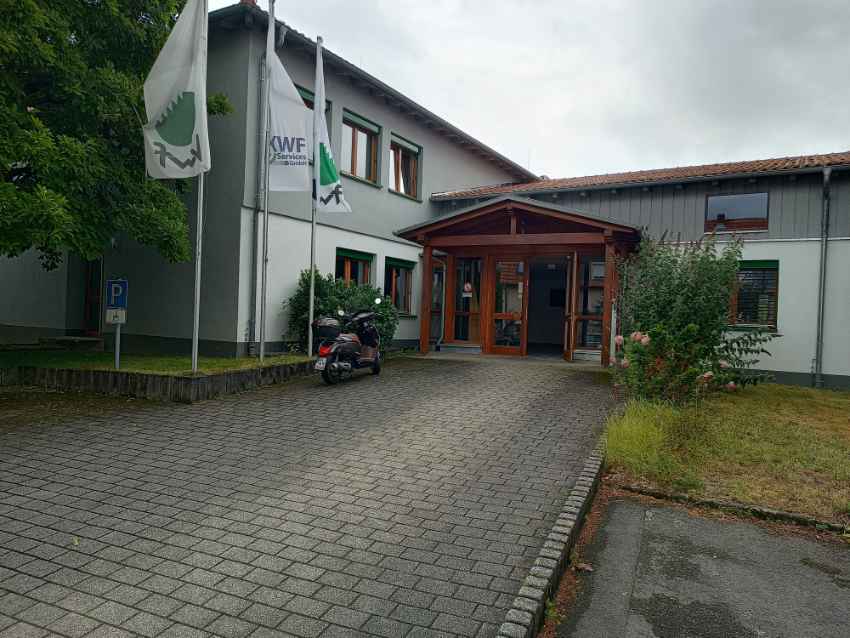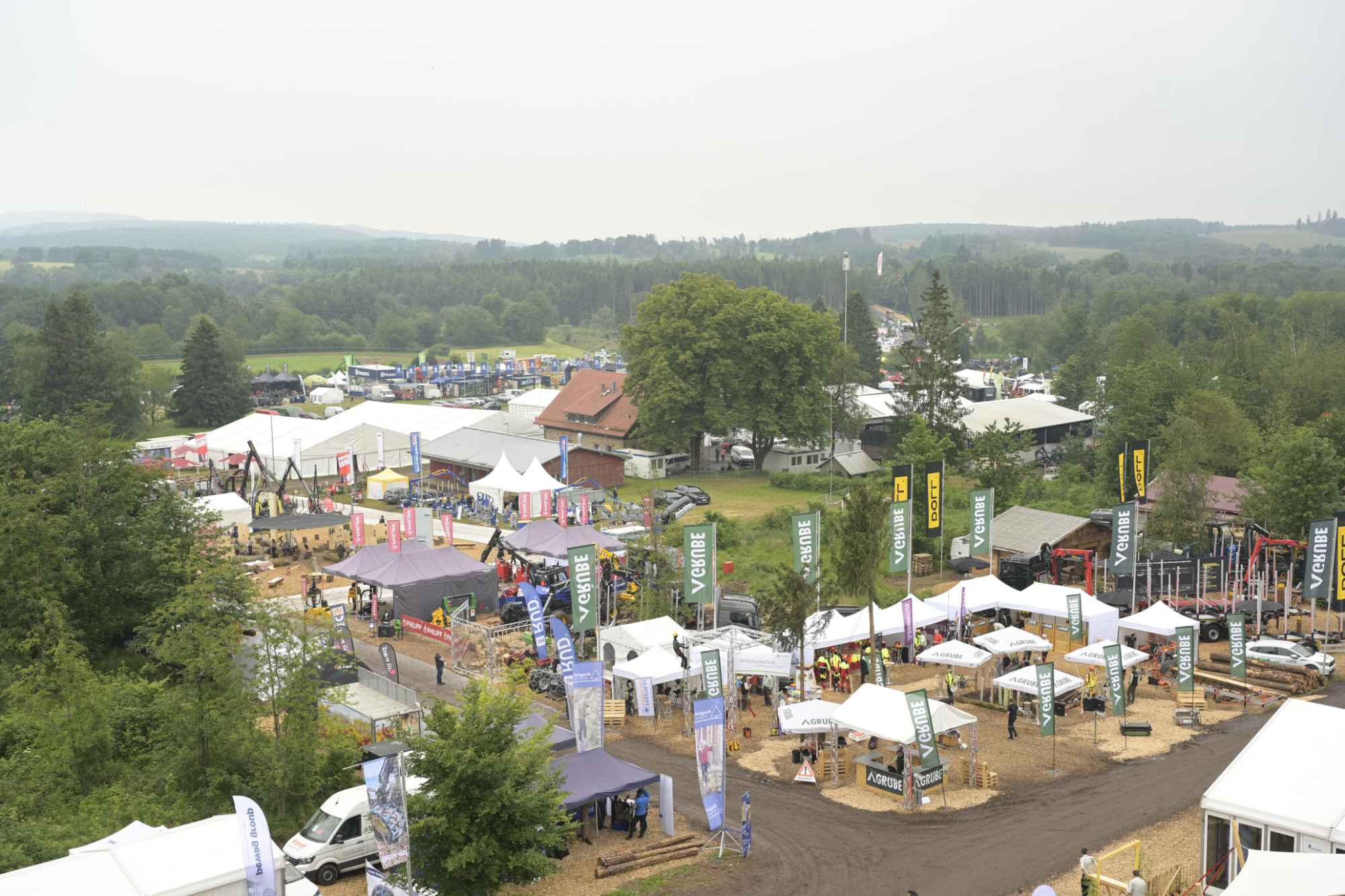The Kuratorium für Waldarbeit und Forsttechnik (KWF) is a technical research and certification institution with ca. 45 employees, including its subsidiaries and temporary project staff, located in Groß-Umstadt (Hessen, Germany). Merged from two predecessor organizations existing since the 1920ies, the KWF was founded in 1962 and registered a charity with the tasks of testing forest machines, tools and protection garment, to enhance occupational safety and to disseminate technical information on forestry and safe working methods. To do so, the KWF is e.g. hosting boards specialized on testing equipment for forestry work, organizing workshops and conferences and doing research with partner institutions. It is consulting the Federal Ministry of Agriculture and the states’ forestry organizations and issues a magazine, the “Forsttechnische Informationen”.
However, the KWF is best known as organizer of the KWF-Tagung, held every four years in a different location as a demo fair in the forest with machines in action. The KWF-Tagung has developed into one of the biggest forestry shows worldwide with more than 500 international exhibitors and about 50,000 visitors mainly from Europe, but also beyond. Next venue is planned to be at the Nürburgring racing track and the adjacent forests from June 28 to July 1st, 2028.
The KWF charity is funded by the Federal Ministry of Agriculture, the federal states’ forestry administrations and from membership fees from its more than 2,300 members. The KWF has outsourced its commercial activities to three subsidiary companies so far:
- Navlog GmbH is offering specialized navigation services on forest roads classified e.g. by bearing capacity or structural clearance, which is particularly important for timber transports navigating in the forest.
- The KWF Expo GmbH (formerly KWF GmbH) is preparing, organizing and marketing the KWF-Tagung.
- The KWF Services GmbH is serving as certifying entity, it is registered as a “notified body” to the European Commission for tests mainly of personal protection equipment, forestry tools and machines. KWF Services is processing the tests conducted within in the KWF experts’ network from all of Germany and some neighboring countries.
Interview with Axel Jönsson, Kuratorium für Waldarbeit und Forsttechnik (KWF).
What are the main areas of activity of the organization?
Axel Jönsson: Testing and rating personal protection equipment, forest tools and machines has always been the core competence of the KWF, in which it has over decades built a reputation throughout Europe. This reputation also helped the KWF-Tagung, held since 1964, particularly since the late 1980ies, when the cut-to-length (CTL) technology started spreading from Scandinavia. Since 2010 additionally the KWF-Thementage (topical days) are organized in different locations every time, focusing on a relevant up-to-date topic. The next Thementage will be held from September 23 to 24 2025 near Ulm (Baden-Württemberg) and show state-of-the-art methods to care for young growth in the forest. This event is more of a regional venue, while the KWF-Tagung has built up European and continuously growing international relevance.

Within the past decades, the KWF has increased research activities in its field of proficiency and in co-operation with scientific partners, with projects covering topics like debarking harvester heads, best practices in timber harvesting, protective garment, developing new machine concepts, CO2 balances in forestry, automated detection of forest road conditions, certification schemes for GNSS solutions in the forest and more. The KWF also is contributing to several official standardization bodies particularly in the field of forest machinery.
The scope of activities of the KWF and its subsidiary companies is growing with the development of technical and digital means being used in forestry, with the objectives to safeguard workers’ health, to optimize work processes while they get more and more mechanized, and to ensure a sustainable forestry.
What’s the news for 2025 about new directions?
A.J: During the past years, the KWF has been able to substantially increase the number of its members and hopes to see this development continued. The outsourcing and restructuring of some of the multiple activities of the KWF, which led to establishing subsidiary companies and reorganizing the KWF staff, will be continued and is due to partly be finished in 2025.
Because of the function as an information hub for forestry, the major topics of how to develop modern forestry operations throughout Germany and beyond are regularly being communicated to the KWF and shape the scope of its activities. Thus the storms, droughts, and bark beetle calamities which destroyed about 5 per cent of the German forests in the years since 2018, have climbed to a top rank on the KWF agenda – the forests regrow only slowly, the repercussions of these damages will have to be dealt with for many years.

What can you tell us about market trends?
A.J: As for the timber markets, windblows, droughts, and bark beetle infestations in the past years caused a lot of softwood stands to be cut ahead of schedule. A lot of timber had to be harvested in consequence and excessive offer regionally led to decline of prices. This was reinforced because the German construction industry — being the major market demanding for Norway spruce, which is the species struck the most by the calamities — is suffering from a crisis for years already. The war in the Ukraine caused a major disruption in the German energy supply, causing high prices particularly for energy intense industries. A new US president unsettling the global economy by gambling with tariffs was of no help in this situation. A new government in Germany, however, gave rise to some optimism for the second half of 2025.
Meanwhile, technology frequently develops new ways to use wood, thus the long-term demand for this climate-friendly and renewable resource will grow. Climate change comes with a lot of questions for the forestry industry, therefor research and development to adapt species and work processes to the changing environment need to be intensified, too. Science has shown that plantations made up by only one tree species tend not to be resistant to biotic or abiotic disturbances, however, it seems to be a long way to adapt practical forestry to this knowledge as it makes plantation management more challenging.
Other major factors triggering research demand are the rapid development of AI, automation and data processing with geographical information systems, leading to new assistance systems for operators, first prototypes of fully autonomous forest machines and ever more sophisticated mapping solutions.

What estimations do you have for the second half of 2025?
A.J: Unpredictable geopolitical developments, as well as weather extremes pose incalculable risks to the ecology and economy of forestry, as this industry is, just like agriculture, heavily depending on the weather and the global markets. Thus, short-term predictions are difficult, particularly when the world’s leading economy is acting quite unpredictable. Long-term trends are easier to identify: Forestry is underway to develop a role model for circular economy and also has to offer options to mitigate climate change, particularly by increasing the use of timber for long-term purposes in the construction industry. But at the same time the global forest ecosystems are heavily under pressure, not only by direct man-made destruction, but also indirectly by climate change, which destabilizes pristine and planted forests and increases the danger of insect infestations and wildfires, too. Foresters need to protect the remaining pristine forests and diversify their stands with resilient species and structures to prepare the forest for the increasing frequency of weather extremes.


